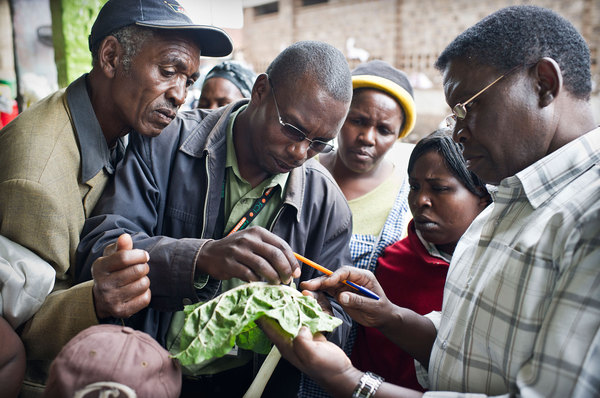Pesticides-L mailing list: creating a global conversation on pesticides issues
Written by Melanie Bateman, Integrated Crop Management Adviser, CABI Switzerland As has been mentioned before in this blog, there are a staggering number of chemicals in the world – estimates go as high as 2 million different preparations for sale. This is a lot for regulators in any given country to assess and monitor for…
Herbicide Resistance Gene In Black-Grass and Rye-Grass Identified
BBSRC (Biotechnology and Biological Sciences Research Council) and Syngenta funded scientists at the University of York and University of Durham have discovered a gene called AmGSTF1 that plays a key role in controlling multiple herbicide resistance in black-grass (Alopecurus myosuroides) and annual rye-grass (Lolium rigidum). Now the gene that confers resistance has been identified, it…
Monitoring and Management of Desert Locusts in Africa
The United Nations Food and Agriculture Organisation (FAO) has this month warned that Desert Locust (Schistocerca gregaria) swarms are invading cropping areas of northern Sudan. The swarms originated from winter breeding areas on the Red Sea coastal plains and subcoastal areas in northeast Sudan and southeast Egypt. The situation requires close monitoring as more swarms are…
Watermelon Genome Could Hold the Key to Improved Varieties With Fewer Pest Problems
A research team led by the Beijing Academy of Agriculture and Forestry Sciences have produced the complete genomic sequence of watermelon (Citrullus lanatus). It is hoped that the genomic data from this study will shape future research into watermelon genetics and provide a good resource for crop genetics and future plant breeding projects, resulting in…
Bean and Gone – Controlling the Coffee Berry Borer Using Integrated Pest Management
The Coffee Berry Borer, Hypothenemus hampei, is a tiny beetle which is widely considered to be the most damaging pest of coffee plantations in the world. Originating in Africa, it is now found in almost all coffee growing areas in the world as an invasive species, with nearly 160 records from different areas worldwide on…
The Soybean Gene: Scientists Discover the Key to Nematode Resistant Soybeans
Soybean (Glycine max) is an important crop that provides a sustainable source of protein and oil worldwide in countries such as the USA, Brazil, Argentina, India and many African countries, including Nigeria, South Africa and Uganda. The soybean cyst nematode Heterodera glycines is a microscopic roundworm that feeds on the roots of soybean and is…
Fungi just as effective as pesticides at controlling crop pest
Researchers at Swansea University have found a strain of fungi that could replace harmful pesticides in the control of the European crane fly (Tipula paludosa). The effects of 17 strains of entomopathogenic fungi, chlorpyrifos-based pesticides and a nematode worm were compared. The pesticides and fungal strain V1005 Metarhizium robertsii were both found to be 100%…
Down the pan
How about I start this week’s blog with a question……what is the common link between the newly-constructed toilet block in Kithimu market place and Maize streak virus (MSV)?
Is citrus greening coming your way?
Mexico is the latest to succumb to the inevitable spread and establishment of huanglongbing (HLB) – the devastating disease of citrus crops. Mexican authorities in the states of Jalisco, Michoacán and Colima have warned growers that HLB – otherwise known as citrus greening – is here to stay. HLB was first detected in Mexico in…
Pest-fighting Anthocyanins
U.S. Department of Agriculture (USDA) scientists in Illinois, USA, are investigating the role of anthocyanins in pest-control. They believe that the plant pigment can adversely affect crop pests such as the corn earworm caterpillar and the cabbage looper caterpillar that feed on it. Anthocyanins are a plant pigment which give blackcurrants and flowers, such as…

